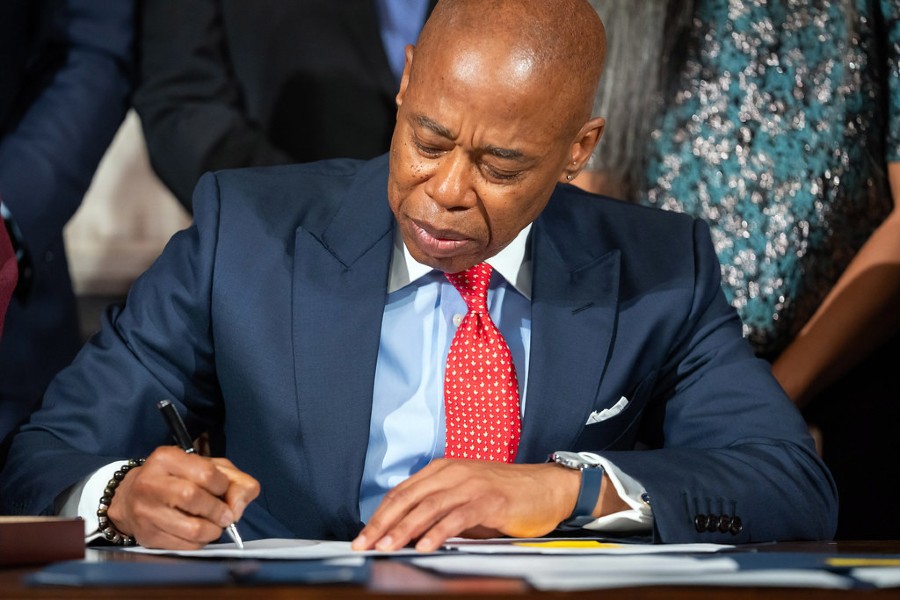 Police Commissioner William J. Bratton and the Rev. Al Sharpton met behind closed doors for an hour on Thursday, discussing allegations of profiling by the police in retail stores.
Police Commissioner William J. Bratton and the Rev. Al Sharpton met behind closed doors for an hour on Thursday, discussing allegations of profiling by the police in retail stores.
For Mr. Bratton, it was a first brush with a racially explosive topic that generated national headlines last fall and several lawsuits by black shoppers, among them the actor Robert Brown of the HBO series “Treme,” who said they had been improperly stopped or arrested for doing nothing more than buying an expensive item.
“My understanding of it has been formed by the media that I read last year,” the commissioner said at an unrelated news conference before the meeting with Mr. Sharpton, adding that he would have a better understanding later.
A central question in what Mr. Sharpton and others have called “shop and frisk” has been who, precisely, has been flagging certain shoppers as suspicious: the police or store personnel. In allegations of profiling at Barneys New York and at Macy’s, the stores said the police acted on their own; the Police Department, in turn, said it was the stores that told them whom to go after.
No clarity emerged on Thursday about those situations, which are currently the subject of lawsuits against the city and the stores. But Mr. Sharpton did say that Mr. Bratton had agreed during their sit-down at Police Headquarters that “all legal engagements with N.Y.P.D. must start with a 911 call with the retailers to the Police Department,” in order to ensure that there would be a better record of who initiated the contact and might, later, be held responsible for racial profiling.
But the department later said it had, in fact, made that change in October after allegations first emerged against Barneys and at Macy’s.
“It was in the aftermath of that,” said Stephen Davis, the department’s top spokesman.
Mr. Davis said the department found that in a small number of cases store employees had taken to calling officers directly on their cellphones about possibly criminal behavior, rather than going through the 911 system. In October, he said, there was a “verbal policy directive” to go through the normal channels.
“Nobody told us,” Mr. Sharpton said on Thursday evening, after holding a news conference in which he — unaccompanied by Commissioner Bratton — spoke about the change. A representative from the Retail Council of New York State, which represents retailers including Barneys and Macy’s, also appeared unaware that the change occurred last year.
“What we learned today, and what we wanted to find out, was what sort of protocol we would be asked to follow,” said Ted Potrikus, director of governmental relations for the trade group, to reporters alongside Mr. Sharpton.
The development on Thursday came nearly four months after major retailers in the city agreed to hang a “Customers’ Bill of Rights” in their stores prohibiting racial profiling, a public effort by stores to respond to the growing criticism.
In the meantime, lawsuits against the two stores have been grinding on.
“A lot of their defense is either they had reasonable cause to believe the person was shoplifting,” said Douglas H. Wigdor, a lawyer representing Mr. Brown as part of a pair of federal class-action suits against Macy’s and the city, “Or they are pointing at the city, saying the store had nothing to do with it.”
Mr. Wigdor added that the 911 policy “doesn’t change anything.”
For Mr. Sharpton, however, just being invited to sit down with the commissioner appeared to be a step in the right direction. He told reporters he was stopped and denied entry to Police Headquarters during Mr. Bratton’s first tenure in the mid-1990s, when relations between the two men were less cordial.
“In terms of New York history,” he observed, “I was allowed in today” (source).
Editor’s Note: Some have said that these companies like Barneys New York and Macy’s do not want communities like Harlem’s money. Do you agree?
Related articles
Become a Harlem Insider!
By submitting this form, you are consenting to receive marketing emails from: Harlem World Magazine, 2521 1/2 west 42nd street, Los Angeles, CA, 90008, https://www.harlemworldmagazine.com. You can revoke your consent to receive emails at any time by using the SafeUnsubscribe® link, found at the bottom of every email. Emails are serviced by Constant Contact






















